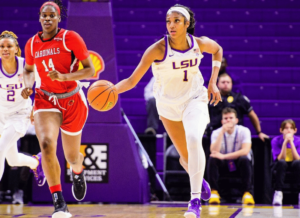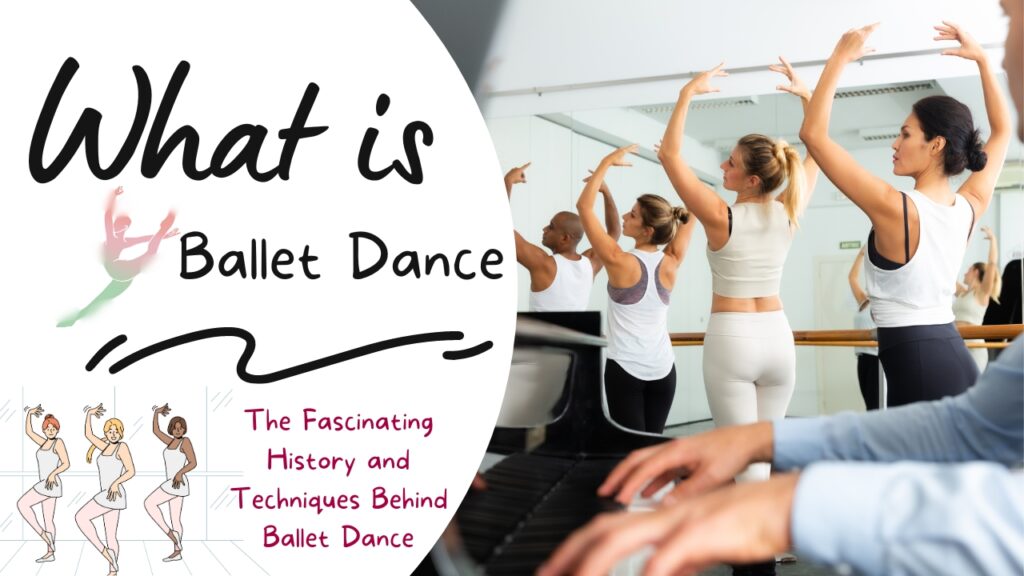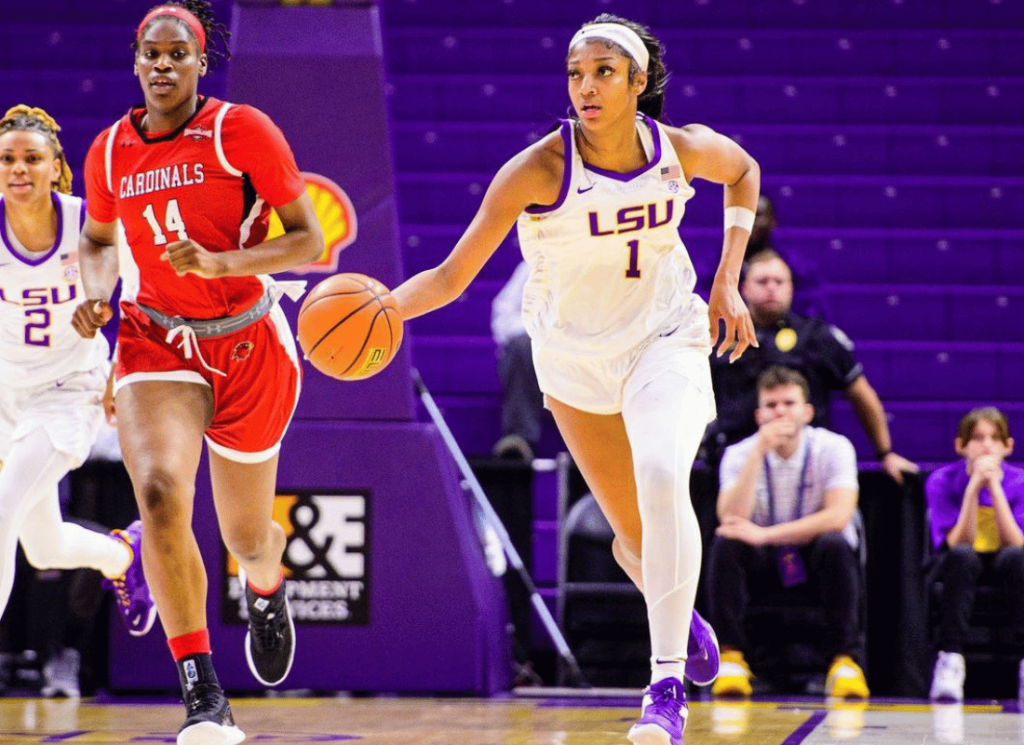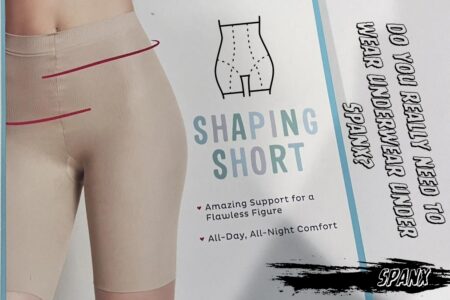A Brief Introduction to Ballet. What is Ballet dance? its origin? its types? and its benefits..? and What to Wear?
Ballet is an elegant art form that has been around for centuries. It’s a kind of dance created by the movement of the human body aiming at telling a story or expressing emotions.
Ballet dance can be magical, exciting, provoking or disturbing. It has a big influence on human beings as it can be very therapeutic. The repetitive movements performed by both men and women and soothing music can help to calm the mind and ease stress levels.
If you want to learn ballet dance, you can do it at any age and anywhere, even at home.
In this article, we are going to talk about ballet, its origins its types, its benefits, and what to wear to it, So Follow us as, We have many things to say about Ballet.
What is Ballet 💃💃
Ballet is more than a dance. It’s an art form created by the movement of the human body
It is theatrical as it is performed on a stage. It contains expressive, dramatic movement that reveal the relationships between characters. Ballet can tell a story or express a thought, concept or emotion.
The term ballet traces its name roots in the Italian word “balleto” which is a variation of another Italian word “balle” which means “dance”. Oxford languages dictionary even traces it up to its Latin name root, “ballare” meaning “to dance”.
Ballet’s Origin
Ballet originated in the Italian Renaissance Courts of the 15th century. Noblemen and women were treated to lavish events, especially wedding celebrations, where dancing and music created an elaborate spectacle.
In the 16th century, Catherine de’ Medici an Italian Noblewoman, a great patron of the arts and wife of King Henry II of France began to fund ballet in the French court with her, Ballet had evolved and included dance, decor, costume, song, music and poetry.
A Century Later, King Louis XIV helped to popularize and standardize the art form. His love of ballet fostered its elevation from a past time for amateurs to an endeavor requiring professional training.
By 1661, a dance academy had opened in Paris and in 1681 ballet moved from the courts to the stage.
By The Mid-1700s, Jean Georges Noverre, a French ballet master rebelled against the artifice of opera-ballet believing that ballet could stand on its own as an art form so he introduced the “ballet d’action” a dramatic style of ballet that conveys a narrative.
Noverre’s work is considered the precursor to the narrative ballets of the 19th C
Types of Ballet
There are four different ballet dance styles that have shaped the trajectory and evolution of the art form
-
1- Romantic Ballet
It was heavily influenced by the Romantic era which was marked by the emergence of pointe work, the dominance of female dancers and longer, flowy tutus that attempt to exemplify softness and a delicate aura.
This movement occured during the early to mid-nineteenth century. Romantic ballet emphasized emotion, lyricism and drama in its narratives and led to a rise in lead female dancers.
The plot of many romantic ballets revolved around spirit women (sylphs, wilis and ghosts) who enslaved the hearts and senses of mortal men Famous ballet dancers of the Romantic era include:
- Marie Taglioni
- Fanny Elssler
- and Jules Perrot
-
2- Classical Ballet
It is a traditional form of ballet usually accompanied by a full orchestra and consisting of a story-driven narrative that is often anchored by a female ballerina The movements of classical ballet often emphasize the weightlessness and extension lines of the ballerina, focusing on fluidity and outward leg rotation
-
3- Neoclassical ballet
Emerging in the 1920s it is usually abstract, with no clear plot, costumes or scenery
Music choice can be diverse and will often include music that is also neoclassical (e.g: Stravinsky, Roussel)
Neoclassical ballet was formed as a response to the prevalent, dramatic elements of romantic ballet.
-
4- Contemporary Ballet
This ballet style is often performed barefoot. Contemporary ballets may include mime and acting and are usually set to music (typically orchestral but occasionally vocal)
Contemporary ballet is also close to contemporary dance because many contemporary ballet concepts come from the ideas and innovations of 20thC modern dance including floor work and turn-in of the legs
What are The Benefits of Ballet?
Many people think that you take ballet classes only to become a ballerina! This isn’t true. Ballet dance is one of the few activities that can boast multiple health benefits all in one ballet dance requires a lot of coordination and strength and can help to improve your balance and flexibility
Ballet is a good way to relieve stress, exhaust and tension and can be very relaxing. Everything you do can be improved through ballet still not convinced? Here’s a list of 6 core benefits of ballet but truthfully, the list is endless.
-
Benefit #1: Strength Training
The major benefit of ballet training is that you’ll be working out your entire body all at once
When you are dancing, you are doing a complex set of physical actions moving different parts of the body in opposing directions, coordinating their movements to music, while simultaneously stretching and controlling your muscles. The result will be long, strong muscles that can move with intention and coordination
-
Benefit #2: Mental Strength
With all those physical demands of ballet, imagine how much work your brain is doing?
Ballet moves take a great deal of focus. You need to always be present and concentrating on what you’re doing This can take just as much practise as the physical side of ballet.
While you are working hard to coordinate your feet to skip (a skill that takes a lot more practice then you would think) your brains are constantly
building new neutral pathways to make all of this happen which increases neuroplasticity The result: Neuroplasticity improves learning, memory and comprehension
-
Benefit #3: Increased Self-Confidence
Performing on stage in front of a big audience isn’t an easy task
Some kids live for the thrill of performance, others are incredibly nervous
The confidence to overcome those fears is built throughout the year in ballet class It is amazing to see a child who came into the class quiet and finished the year on stage full of joy Hence, the result Ballet dance teaches kids to be self-confident and even if the performance on stage is less than perfect, kids learn to appreciate their success, and learn from their mistakes.
-
Benefit #4: Increased Endurance
After attending ballet classes for a few months, you may be pleasantly surprised how you can now jog up a flight of stairs without getting out of breath
-
Benefit #5: Increased Flexibility
You may have heard of the ballet barre This part of ballet is focused on stretching while you hold onto a wooden or metal bar with one hand. The result: you can dramatically improve flexibility and muscle tone
-
Benefit #6: Built Social Skills
In a ballet class, all children are there for a common reason: they love to dance. That in itself creates a special camaraderie between each other
One of the best things you can see in a ballet class is a student helping another learn a step. The student teaching feels empowered to help and the student learning feels acceptance from his peer. This’ll create a strong bond between the two. Listening to one another, accepting someone’s creative ideas, respecting one another is a unique part of ballet classes
This can be a really fun way to make new friends
What to Wear to Ballet Class?
There are many benefits to taking ballet classes. You are likely to improve flexibility, strength and endurance by investing in such an activity.
However, you may be a bit concerned about what to wear while doing this exercise
Here are seven types of ballet clothes that you can wear:
-
1- Comfortable Leotard
Leotards are the most common apparel for ballet students. They have been the uniform for every ballet student in the world for over a century. One of the great practical benefits of leotards is that they are neither loose nor tight enabling you to make exercising much easier and getting the most from your lessons
You can find leotards in a variety of colors and designs and with reasonable prices.
-
2- Elastic Waist Shorts
Another type of ballet cloth that you should be wearing is this pair of elastic waist shorts. It can help you do all the necessary moves without feeling restrictive
Choosing these elastic waist shorts can enable you to bend with ease and have fun at your next ballet class
-
3- Sheer Skirt
You may want to appear super cute when taking your next ballet class, it’s advisable then to wear a sheer skirt over your leotard
You’ll really look as a “nice butterfly” Most of these skirts are made of a sheer fabric that’s easy to care for and wear. You can find them in a variety of colours and designs and it’s your job to choose one that matches well your leotard
-
4- Ballet Shoes 🩰
There is no alternative to ballet shoes they are the single most important thing you can wear to ballet classes
It’s not practical to go barefoot or wear socks on stage as you may slip and cause injury. So it’s important to go for ballet shoes
Ballet shoes can be leather or canvas and come with a full-sole or split sole. Pink is the most traditional color to wear though, black and white are also acceptable
-
5- Leggings
Another item that can boast your performance during every ballet class are these leggings. These can help you do all your best and allow you to feel comfortable at the same time
Choosing an athletic type featuring a moisture-wicking material can be a good choice as it can help you avoid leggings that are too tight or causing you to sweat more
Athletic leggings are ideal and you can find them in many styles, patterns and designs
-
6- Tights
Really We recommend Wearing Tights underneath your leotard. They help reduce the risk of injury by keeping the leg muscles warm
In addition, when you have to sit on the floor to stretch, there is nothing worse for your muscles than to sprawl out on a cold dance floor
You can wear black tights, if you want to you can also go for footed, footless or convertible tights
-
7- Headbands
Many girls want to keep their hair out of their eyes while they are dancing. The only remedy is to use the right types of hair accessories
Choosing a variety of headbands to wear at your ballet class can be a great idea
You can find these at your local grocery store or drugstore and with different colors
If your hair is long enough to wrap into a bun keep your hair out of your face by using some hair accessories like hair ties, clip or bobby pins but avoid rubber bands as they can lead to harmful breakage
Frequently Asked Questions (FAQs)
-
Q1: What is Contemporary Ballet?
Ballet is a form of dance that blends classical ballet with modern dance to create more expressive, less rigid movements than classical ballet. Contemporary ballet dancers often start by learning classical ballet techniques and then add in training in modern dance and modern ballet techniques.
-
Q2: What is a Ballet Barre?
In Ballet, the barre is a long handrail used for warming-up exercises and practicing of techniques and principles for positioning. The barre is a standard feature of a ballet/dance studio. However, ballet dancers sometimes substitute a chair, desk or another similar object when a barre is not available. The term “barre” also refers to those specific exercises performed at the barre exercises. Overall, exercises performed with the barre are used as the foundation for all other ballet exercises’ steps and routines.
-
Q3: What Ballet Shoes are Best for Beginners?
Ballet slippers are the only shoes that should be worn by dancers, and there are many reasons why. They offer protection for the dancer’s foot and toes, and they allow a dancer to feel the floor in their foot so that they can feel where they are placing their feet.
While the full sole ballet slipper is the most popular choice for beginners, it is important to note that these shoes should be worn only for class and rehearsal. They should not be worn for performances as they have a strong grip on the bottom of the shoe which could damage a stage. The soft-sole ballet slipper offers another option to protect dancers’ feet while they are in class and rehearsal. This shoe has no grip on the bottom of the shoe
-
Q4: What are Demi Pointe Shoes?
Demi pointe shoes are a training tool for dancers who are nearing the age and level that they can go en pointe. Demi pointe shoes have a full leather outsole, which makes the muscles of the foot work harder to articulate in ballet steps. Strong intrinsic foot muscles are necessary to properly execute ballet and pointe technique, and one way to achieve this strength is by adding resistance from a full sole.
“Demi pointe shoes are less popular these days but they help bridge the gap from flat ballet shoes to hard pointe.”
Conclusion:
Ballet dance is a timeless art form that has captivated audiences for centuries. With its grace, beauty, and athleticism, ballet is a true celebration of the human form. Whether you are a seasoned dancer or a newcomer to the world of dance, ballet is a mesmerizing experience that is sure to leave a lasting impression. So put on your dancing shoes and immerse yourself in the world of ballet, where the magic of movement comes to life.







